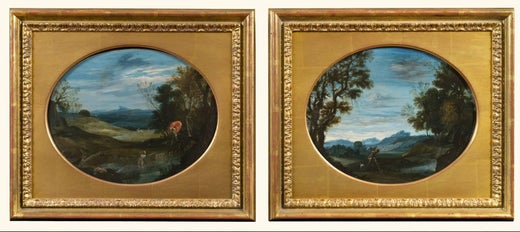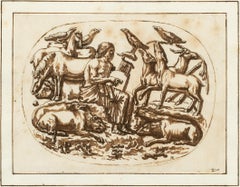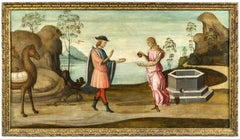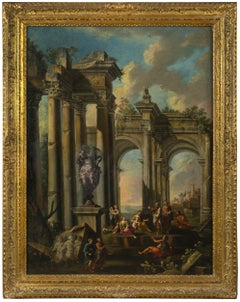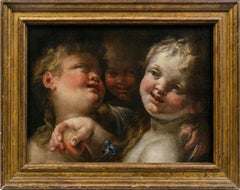Giovanni Battista ViolaTwo Scenes of Diana and Actaeon (a pair)
About the Item
- Creator:Giovanni Battista Viola (1576 - 1622, Italian)
- Dimensions:Height: 9 in (22.86 cm)Width: 11.12 in (28.25 cm)
- Medium:
- Movement & Style:
- Period:
- Condition:
- Gallery Location:New York, NY
- Reference Number:1stDibs: LU102342462
Giovanni Battista Viola
Giovanni Battista Viola was an Italian painter of the early Baroque period in Rome. Viola was born in Bologna and went to Rome in about 1600. He established himself as a specialist landscape painter, executing frescoes and easel paintings with small figures. Viola was closely associated with Francesco Albani (1578–1660) who married his daughter in 1613. He worked with Domenichino and Albani at Bassano di Sutri in 1610 and collaborated in the execution of the frescoes by Domenichino in the Stanza di Apollo at the Villa Aldobrandini, Frascati. Viola was well respected for his landscape canvases, which were documented among the works in the collections of Cardinal Pietro Aldobrandini, Giustiniani, Cardinal Mazarin and the Pamphilj. Louis XIV of France collected at least landscapes, now in the Louvre. He was a teacher of Bartolommeo Lotto and Pietro Paolo Bonzi (il Gobbo dalle Frutta) and would have been influential for Claude Lorraine. The biography of Amorini recounts that Viola died mortified after offending Cardinal Ludovisi.
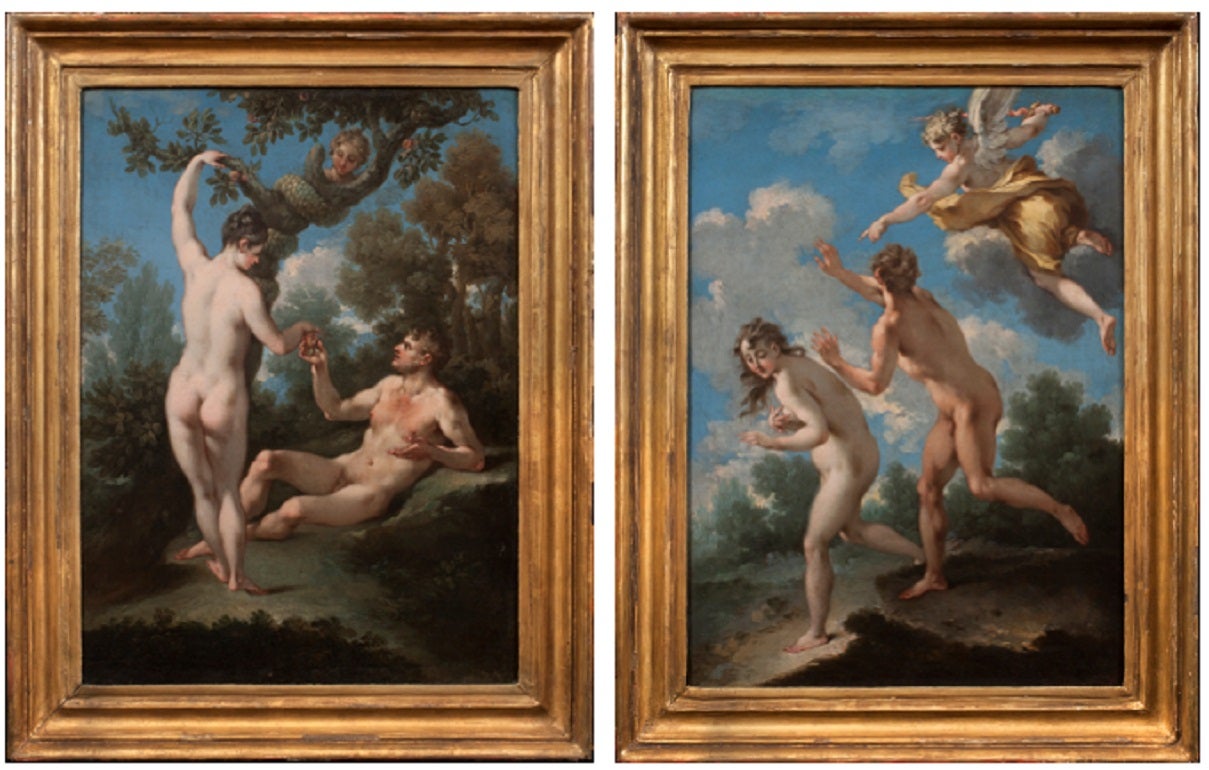
- ShippingRetrieving quote...Shipping from: New York, NY
- Return Policy
More From This Seller
View All16th Century Baroque Figurative Drawings and Watercolors
Paper, Ink, Pen
15th Century and Earlier Old Masters Figurative Paintings
Oil, Tempera, Wood Panel
18th Century Old Masters Figurative Paintings
Canvas, Oil
17th Century Baroque Figurative Paintings
Canvas, Oil
15th Century and Earlier Old Masters Figurative Paintings
Tempera, Wood Panel
17th Century Old Masters Animal Paintings
Canvas, Paper, Oil
You May Also Like
16th Century Baroque Landscape Paintings
Paint
17th Century Baroque Landscape Paintings
Oil
17th Century Baroque Landscape Paintings
Oil
17th Century Baroque Landscape Paintings
Oil
17th Century Baroque Landscape Paintings
Oil
17th Century Baroque Landscape Paintings
Oil
